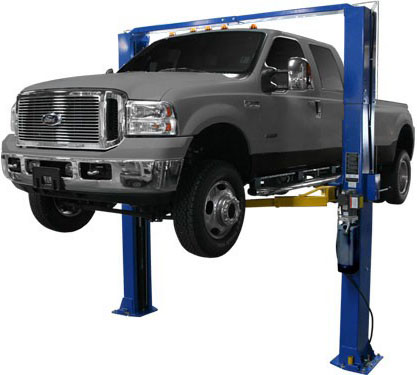Before you decide on a new tire, ask yourself these questions:
- What tires are on your car now?
- Did you like your old tires? (Smooth ride, good handling, long wearing, etc.?)
- What do you want your new tires to do?
- How important is crisp handling and quick stopping compared to smooth ride or long wear?
- What kind of “look” are you after?
- What level of convenience, service and warranties do you expect?
When you answer these questions, you narrow the choices to ones that fit your specific needs and wants. It helps the salesperson, too. He or she won’t waste your time discussing tires you don’t want.
Determining your correct tire size
Look in your automobile owner’s manual. You’ll find the size fitted on the car originally. Unless you’ve changed wheels, that’s the recommended size. The tire size is written on the tire’s sidewall.
Example – Tire sizing as it appears on the sidewall: P215/65R15 89H
- P — Passenger car tire
- 215 — Width of tire in millimeters
- 65 — Ratio of height to width (aspect ratio)
- R — Radial
- 15 — Diameter of wheel in inches
- 89H —Load index & Speed Symbol
Reading the tire sidewall
“P” indicates a passenger (car-type) tire. Other options would be no “P” indicating metric sizing (essentially the same as “P”-sizing, which has its heritage in Europe) or “LT” for light truck. Light truck tires are designed for heavier loads and more rugged service conditions. Width of the tire in millimeters: The higher the number the wider the tire. Aspect Ratio: The height of the sidewall section compared to the width of the tire.
Example – If this number was a 50, then the tire section is half as tall as it is wide.
Short sidewalls deliver crisp handling. Tall sidewalls give a smoother ride. For a specific tire width, the smaller this number, the shorter the sidewall.
Construction
“R” indicates radial construction. Unless you specify the other option, bias (which would have a “D” (diagonal) or “B” (belted bias) in this position instead of an “R”), you are purchasing a radial tire.
Wheel size designation
This indicates the distance across the “doughnut hole” of a tire in simple terms. You must match wheel diameter and the tire opening. A tire with a 15 size designation will not work on a 14” wheel, and vice versa. Improperly matching of wheel and tire size can cause serious injury or death during installation.
Service description
Includes the load index (a number) and a speed symbol (a letter). About load index, remember: keep the number the same as or greater than the original tires’ load index. That number stands for a specific weight carrying capability. Key is that the higher the number, the greater load carrying capacity. So keep the number the same or higher, because your tires are matched to the weight of your car. Never choose a tire with a lower load carrying capacity than the original equipment tire size.
Now the speed symbol
Each letter corresponds to a speed rating on an indoor test wheel:
- N = 87 mph
- P = 93 mph
- Q = 99 mph
- S = 112 mph
- T = 118 mph
- U = 124 mph
- H = 130 mph
- V = 149 mph
- Z = 150+ mph
- W = 169 mph
- Y = 188 mph
We recommend that the replacement tires match the speed symbol of the original tires since these match the speed capability of the vehicle.
Uniform Tire Grading (UTQG)
The Uniform Tire Quality Grading (UTQG) is a system developed by the Department of Transportation which helps consumers compare tires in the areas of treadwear traction and temperature.
Example – A tire with a UTQG of 300 AB: The 300 is treadwear, which represents the tire’s comparative wear when measured against the government-mandated tire which is rated at 100. So this tire wore three times longer than the control tire.
Because of variations in operation conditions, the treadwear grade cannot be used to predict actual wearout mileage. It can be used to predict the relative wear rate of tires with different UTQG wear rates.
Traction and temperature are graded A (superior), B (good), or C (average). Traction indicates the level of grip the tire possesses. Temperature rating deals with the tire’s ability to disperse built-up heat. Heat causes rubber to deteriorate over time, so dispersing heat increases tire life.
Each tire manufacturer determines UTQG rating for their products. Realize that UTQG’s are more accurate when comparing tires within the same line versus tires from two different makers.
Tire maintenance
Inspect your tires regularly. Properly cared-for tires typically last 40,000 to 80,000 miles, depending on the application. Practice good driving habits, which will help keep your tires in good condition. Your tire maintenance checklist includes:
- Pressure
It is important to have the proper air pressure in your tires, as under inflation is the leading cause of tire failure. The right amount is specified by your vehicle manufacturer and is also listed in your owner’s manual. - Alignment
Misalignment of wheels in the front or rear can cause uneven and rapid treadwear. Have your alignment checked periodically. - Rotation
Sometimes irregular wear can be corrected by rotating your tires. Consult your vehicle owner’s manual or your tire dealer for the appropriate rotation pattern for your vehicle. - Tread
Tires must be replaced when the tread is worn down to 1/16” in order to prevent skidding and hydroplaning.










